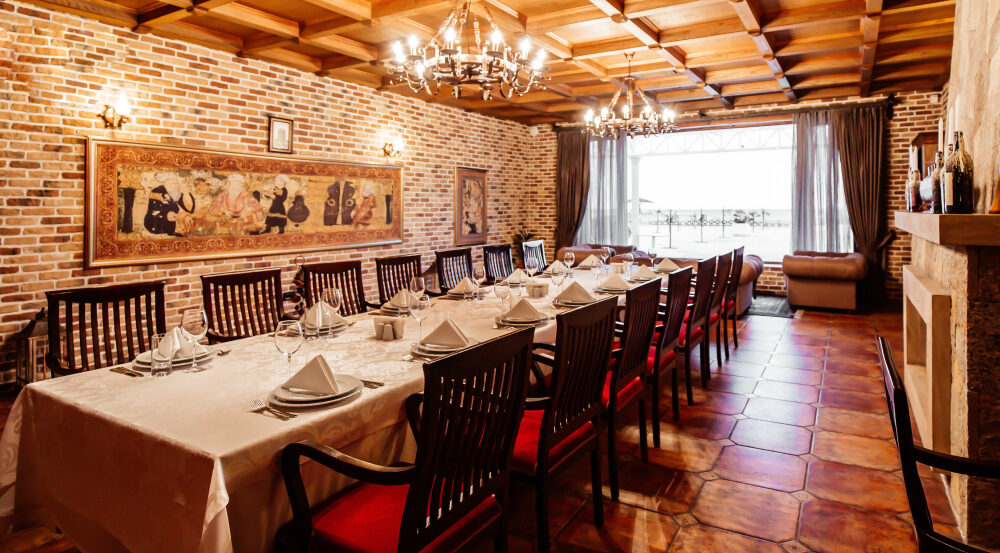Build a Restaurant is the dream of many aspiring entrepreneurs. When managed correctly, they can be profitable and fulfilling ventures, allowing you to connect with your community and enjoy financial success. Whether embracing a traditional restaurant experience or experimenting with new food trends, there are countless ways to make your dream a reality. Nevertheless, starting a restaurant requires careful planning and thoughtful execution. We’ve created a step-by-step guide walking you through the restaurant startup process so that you can position your new business for success.

1. Choose a Restaurant Concept
The first step in building a restaurant is to choose a concept. This is the theme or idea behind your restaurant. Do you want to serve Italian food, American burgers, or perhaps a fusion of different cuisines? Your concept will guide every decision you make, from the menu to the décor.
2. Write a Restaurant Business Plan
Next, you’ll need to write a business plan. This is a document that outlines your restaurant’s goals and how you plan to achieve them. It should include sections on your concept, market analysis, marketing strategy, and financial projections. A solid business plan is essential for securing funding and guiding your business decisions.
3. Obtain Restaurant Funding
Starting a restaurant can be expensive, so you’ll likely need some funding. There are several ways to obtain funding, including loans, investors, and personal savings. Be sure to explore all your options and choose the one that best suits your needs.
4. Create a Menu
Your menu is one of the most important aspects of your restaurant. It should reflect your concept and appeal to your target audience. Be sure to include a variety of options and price points to cater to different tastes and budgets.
5. Find a Commercial Space
Once you have your concept and menu, you’ll need to find a location for your restaurant. Look for a commercial space that is easily accessible and has enough room for your kitchen and dining area. Consider the foot traffic and visibility of the location as well.
6. Plan Your Restaurant’s Layout
The layout of your restaurant is crucial for creating a pleasant dining experience. Be sure to plan your kitchen and dining area carefully. The kitchen should be efficient and well-organized, while the dining area should be comfortable and inviting.
7. Acquire Restaurant Permits and Licenses
Before you can open your restaurant, you’ll need to obtain the necessary permits and licenses. These may include a business license, health permit, and liquor license. Be sure to check with your local government for the specific requirements in your area.
8. Acquire Restaurant Equipment
You’ll need a variety of equipment to run your restaurant, including kitchen appliances, furniture, and tableware. Be sure to invest in high-quality equipment that will last and meet your needs.
9. Hire Restaurant Staff
Your staff is the backbone of your restaurant, so it’s important to hire the right people. Look for individuals who are experienced, reliable, and passionate about food and customer service.
10. Advertise Your Restaurant
Once you’re ready to open, you’ll need to get the word out. There are many ways to advertise your restaurant, including social media, local newspapers, and word of mouth. Be sure to create a marketing plan that targets your ideal customers.
11. Host a Soft Opening
Before your grand opening, consider hosting a soft opening. This is a smaller event where you can test your menu and service with a limited number of guests. It’s a great way to iron out any kinks and ensure everything runs smoothly.
Frequently Asked Questions
What Is A Restaurant Concept?
A restaurant concept outlines your theme, style, and target market.
How Do I Write A Business Plan?
A business plan includes objectives, market analysis, and financial projections.
Where Can I Obtain Restaurant Funding?
Funding can come from loans, investors, or personal savings.
What Should Be Included In A Menu?
A menu should highlight your specialties and reflect your restaurant’s concept.
How Do I Find A Commercial Space?
Find a commercial space through real estate agents or online listings.
What Permits And Licenses Are Needed?
Permits include food handling, liquor licenses, and health department approvals.
Conclusion
Building a restaurant is a challenging but rewarding endeavor. By following these steps, you can set yourself up for success and create a restaurant that your community will love. For more detailed guidance, check out Sakib Mahamud’s blog.
For additional resources and expert advice, visit Sakib Mahamud’s blog.









